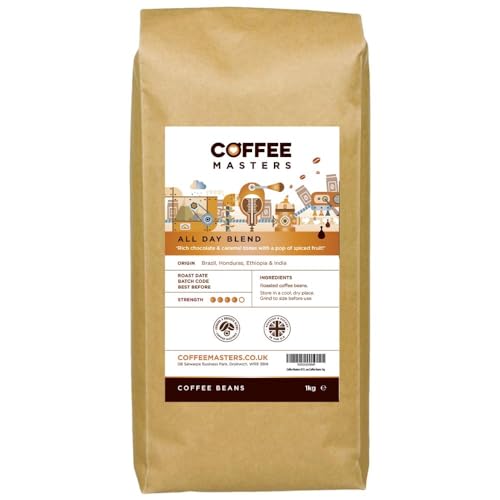Which Coffee Beans Are the Best?
The type of beans you choose can make an enormous difference when it is making a great cup. Each variety has a distinct flavor that is perfect for a variety of drinks and food recipes.
Panama is the leader in the field due to their rare Geisha beans that score high in cupping tests and are expensive at auction. However, Ethiopia, especially Yirgacheffe beans is close behind.
1. Geisha Beans from Panama
If you’re looking to find the top coffee beans in the world then look at Geisha beans from Panama. Geisha beans are prized due to their unique flavor and aroma. These rare beans are grown at very high altitudes and undergo a unique processing technique that creates their distinctive flavor. The result is a coffee with a smooth, rich flavor.
The Geisha coffee plant is native to Ethiopia However, it was first introduced in Panama in 1963. Geisha coffee is famous for its superior flavor and taste. Geisha beans are also costly due to the work involved in growing them. The Geisha coffee plant is more difficult to grow than other coffee plants because it requires higher elevations and Coffeee unique climate conditions.
Geisha beans are also very delicate and should be handled with great care. They need to be carefully separated and prepared meticulously to roast. Otherwise, they may turn acidic and bitter.
The beans are grown at the Janson Coffee Farm, which is located in Volcan, Panama. The farm specializes in quality production and is committed to preserving the environment. They utilize solar panels to generate energy and recycle waste water and materials, and use enzyme microbes to improve soil. They also plant trees and use recycled water to wash. Their coffee is Washed Geisha, which was awarded the highest score at a Panama Coffee Competition.
2. Ethiopian Coffee
Ethiopia is a huge coffee producer with a long tradition of producing some of the finest coffees. They rank as the 5th largest coffee producer in the world, and their beans are highly prized for their unique fruity and floral flavor profiles. Contrary to other coffees, Ethiopians taste their best when they are roast to a medium or even a light roast. This lets the delicate floral notes to stay while highlighting their fruity and citrus flavors.
Sidamo beans, which are known for their crisp acidity and crisp acidity, are among the top in the entire world. However, Coffeee other coffees such as Yirgacheffe or Harar are also highly regarded. Harar is the most famous and oldest coffee variety. It has a distinct wine and mocha flavor. Coffees from the Guji zone are also recognized for their distinct terroir and complex flavors.
Another type of coffee from Ethiopia is known as natural process, and it is made using dry-processing instead of wet-processing. Wet-processing involves washing coffee beans which tends remove some of its fruity and sweet taste. Natural process Ethiopian coffees were not as popular as the washed counterparts. They were more commonly used to brighten blends rather than being available on the specialty market. However, recent technological advances have allowed for more natural Ethiopians.
3. Brazilian Coffee
Brazilian Coffee is a rich mix of various types. It is known for having a low acidity. It is sweet with hints of chocolate. The flavors vary based on where and in which state it is grown. It is also renowned for its citrus and nuts notes. It is a good option for those who prefer medium-bodied coffee.
Brazil is the world’s biggest exporter and producer of coffee. Brazil produces more than 30 percent of the world’s total coffee beans. Brazil’s economy is heavily dependent on this large agricultural industry. Brazil has a climate ideal for coffee cultivation, and there are fourteen major coffee-producing regions.
The main beans that are used in Brazilian coffee are Catuai, Mundo Novo, Obata, and Icatu. They are all varieties of Arabica. There are also a number of hybrids that include Robusta. Robusta is a kind of coffee bean that is found in Sub-Saharan Africa. It’s not as tasty as Arabica coffee, however it is much easier to grow and harvest.
It is important to realize that slavery is still prevalent in the coffee industry. Slaves in Brazil are often subjected to long and exhaustive workdays and may not have adequate housing. The government has taken steps to address this issue, including establishing programs to help farmers with their debts.
4. Indonesian Coffee
The top Indonesian coffee beans are well-known for their dark roast coffee beans, earthy flavor. The volcanic ash that is mixed into the soil gives them a robust body and a low acidity which make them great for blending with more acidic beans from Central America and East Africa. They also react well to roasts that are darker. Indonesian coffees have a rich and rustic flavor profile and often have notes of leather, tobacco, wood, ripe fruit and spices.
Java and Sumatra are the two biggest coffee producing areas in Indonesia but some coffee is also grown on Sulawesi and Bali. Many farms in this region use a wet-hulling process. This differs from the washed method of processing that is used in the majority of the world, where the coffee cherries are separated and then washed prior to drying. The hulling process decreases the amount of water in the coffee, thereby limiting the impact that rain can have on the quality of the finished product.
One of the most adored and high-quality varieties of Indonesian coffee is Mandheling which comes from the Toraja region. It is a robust coffee with hints candied fruit and intense flavors of chocolate. Other varieties of coffee from this region are Gayo and Lintong. These are generally wet-hulled with a full and smoky flavour.
